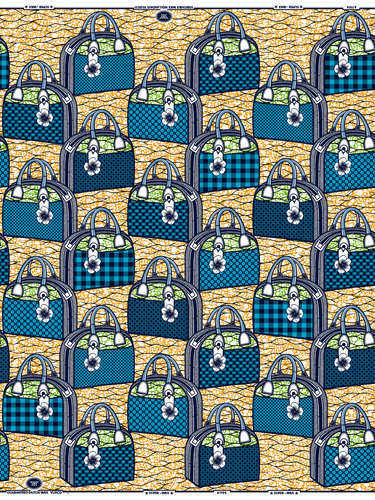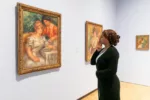[Andrea learns about African textiles in context with the work of modern artists, including Yinka Shonibare and Grace Ndiritu. — the Artblog editors]
A substantial crowd gave up a sunny Sunday afternoon on March 23 to hear Alisa La Gamma, curator in charge of the Department of the Arts of Africa, Oceania, and the Americas at the Metropolitan Museum of Art, speak about current and historical African textiles. The lecture was held in connection with Yinka Shonibare’s exhibition MBE: Ladders, which will be on view at the Barnes Foundation through April 21. The exhibition itself, reviewed for Artblog by Leah Koontz, is considerably more than a showcase for the Barnes’ recent commission from the artist, and gives a satisfying overview of Shonibare’s art.
A time-honored craft, constantly evolving
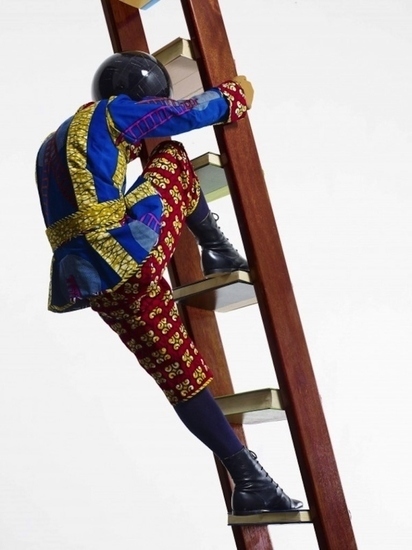
Shonibare’s work is characterized by his use of Dutch wax-printed fabric, which is the term used for a type of patterned cotton that the Dutch have produced since the 19th century for export to West Africa, employing the batik technique derived from Indonesia. Dutch wax prints sometimes incorporate elements related to common folk sayings, but other patterns are named after they appear in the African market, where they acquire new meanings. Still others feature motifs of modern, industrial origin, such as electric fans, or that commemorate a specific, current event, such as the election of President Obama.
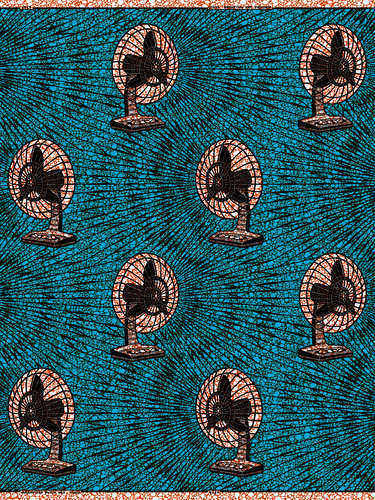
The artist has said that he chose these fabrics, which embody complex political and economic dynamics across three continents, to challenge notions of authenticity. This is likely an ongoing personal topic for the Nigerian-born, British-educated artist, who resides in London. He obtains the fabrics he uses at the street market in Brixton, a South London area with a large African and West Indian population. Shonibare employs top-of-the line fabrics produced by the Dutch company Vlisco, which sell for several times the price of ordinary Dutch wax prints manufactured in West Africa and, increasingly, in China. The story of these printed cottons continues to become ever more international.
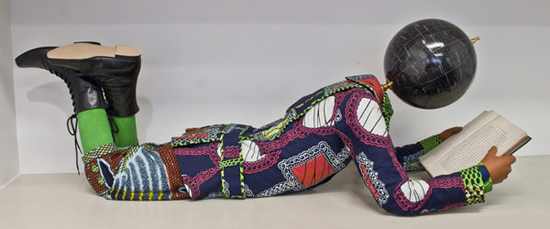
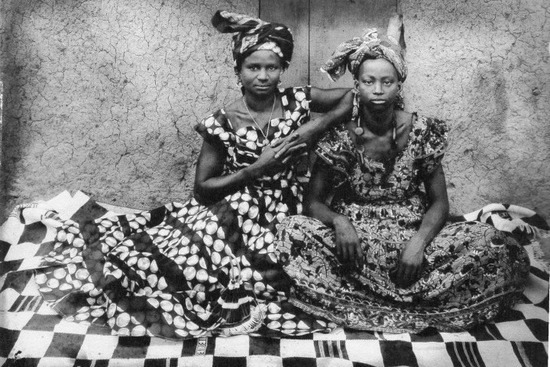
Learning to appreciate textiles
A number of contemporary artists besides Shonibare have used various African textiles, or those intended for the African market, as significant elements of their work. La Gamma showed examples, including those by Grace Ndiritu, who studied textiles at art school in the U.K., and now uses them performatively, both live and on video.

La Gamma spoke of the long tradition of valorization of textiles in Africa, which was not accounted for by European collectors and artists who were drawn to African sculpture. Textiles are still not fully appreciated, since we consider them to be decorative, rather than fine art. Likely because of this perception, textile traditions were not disrupted by colonization to the same extent as other visual arts. La Gamma surveyed the history of traditional, handmade textiles–many of them assembled from multiple pieces because they were woven on narrow-strip looms used only in Africa. Textiles are very much a living art form in Africa, where they have continued to adapt and remain current.
